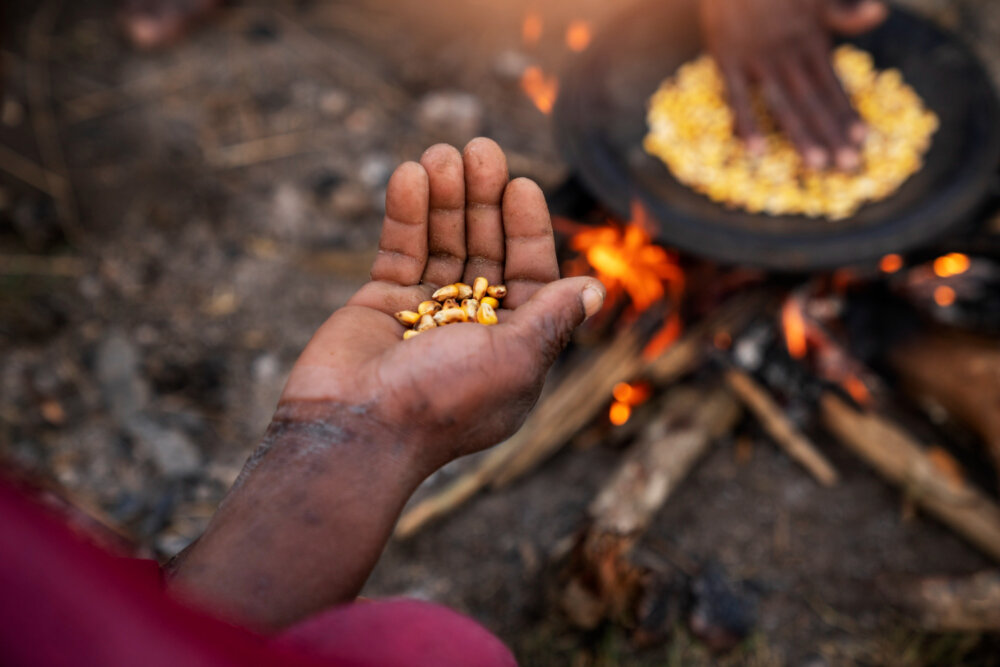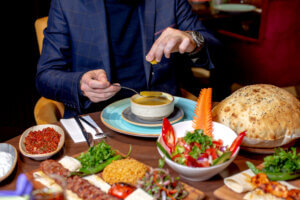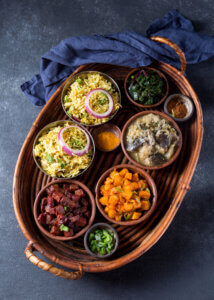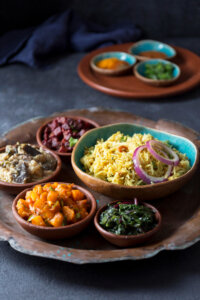In the heart of Sri Lanka, tucked away from the bustling cities and tourist-laden beaches, lies a culinary tradition that is as rich and vibrant as the island’s lush landscapes. Sri Lankan village cooking, relying on the earthy embrace of clay pots and the smoky warmth of firewood, is more than just a method of preparing food; it is a living tapestry of history, culture, and community. In these small villages, cooking is an art form passed down through generations, weaving together the island’s diverse influences and the echoes of ancient practices.
The Story of Sri Lankan Village Cooking: Clay Pots, Firewood & Tradition
The tradition of using clay pots and firewood in Sri Lankan cooking dates back centuries, rooted in a time when every meal was a collective celebration of life and nature. Passed from mother to daughter, father to son, the art of village cooking is a testament to resilience and adaptability. In a world where technology often overshadows simplicity, this method remains a steadfast keeper of traditions, binding families and communities alike.
In the villages, meals are not just about sustenance. They are about storytelling, sharing, and nurturing bonds. The crackle of firewood, the gentle bubbling of curry, and the aromatic dance of spices in the air are all integral parts of a narrative that speaks of Sri Lanka’s multicultural heritage.
Ingredients or Key Elements
Sri Lankan village cooking is defined by its ingredients, each one chosen not only for its flavor but for its connection to the land. The clay pot, or “mati goraka”, is central to this culinary tradition. Made from the rich red earth of the island, the pot is more than a vessel; it is a conductor of flavor, infusing dishes with a unique earthy aroma.
- Rice: The staple of every meal, often the fragrant Samba or Red Rice varieties.
- Coconut: In various forms—milk, oil, sambol—adds creaminess and tropical notes.
- Spices: Ceylon cinnamon, cardamom, and cloves provide warmth and complexity.
- Fresh Produce: Vegetables like eggplant, okra, and jackfruit, often grown in backyard gardens.
Preparation or Practice
The preparation of a traditional Sri Lankan village meal is a sensory journey that begins with the gathering of ingredients, often from local markets or the family’s own garden. The clay pots, after being soaked in water to prevent cracking, are warmed over a gentle flame. This process is a ritual in itself, a moment of mindfulness as the firewood’s crackles signal the start of the cooking.
Each dish follows a rhythm, a melody of steps that are as much about intuition as they are about precision. Spices are roasted until their fragrances rise in aromatic plumes, coconuts are grated and pressed for their milk, and vegetables are chopped with a practiced hand. The pot is then filled, layer by layer, with these lovingly prepared elements. As the heat rises, the flavors meld together, creating a symphony of taste that is both complex and comforting.
Symbolism or Local Meaning
In Sri Lankan culture, the act of cooking is imbued with symbolism, particularly when done in clay pots over firewood. This method is seen as a connection to the earth, a way to honor the natural world that provides sustenance. It is believed that cooking in clay enhances the flavor and nutritional value of food, a nod to the harmony between humans and nature.
Moreover, these meals are often communal, reinforcing bonds and fostering a sense of belonging. Whether it’s a bustling family gathering or a quiet village celebration, the shared experience of cooking and eating together is a cherished cultural cornerstone.
Where to Experience It
Travelers seeking to immerse themselves in this authentic culinary tradition can find it in the rural villages dotting Sri Lanka’s landscape. Places like the cultural triangle near Anuradhapura, the lush hills of Kandy, or the coastal serenity of Galle offer opportunities to partake in village cooking experiences. Local homestays and eco-lodges often host cooking classes, where guests can learn the art of cooking with clay pots and firewood from village elders who are eager to share their knowledge.
Tips for Travelers
- Respect the Ritual: Recognize the cultural significance of this cooking tradition, and participate with an open heart and mind.
- Engage with Locals: Embrace conversations with those who prepare your food; their stories are as rich as the dishes themselves.
- Be Mindful of Etiquette: Always use your right hand for eating, a practice that is both cultural and hygienic.
- Authenticity Over Convenience: Choose local, small-scale experiences over commercialized ones to ensure authenticity.
Conclusion
Sri Lankan village cooking, with its clay pots and firewood, offers a deeply immersive experience that transcends the act of eating. It is a celebration of tradition, a homage to the island’s rich and diverse cultural tapestry. As you savor each bite, you are not just tasting food; you are tasting history, love, and the unyielding spirit of a community that cherishes its roots. For travelers, this is not just a culinary journey but an invitation to step into a world where stories are told through flavors, and every meal is a heartfelt embrace from Sri Lanka itself.




